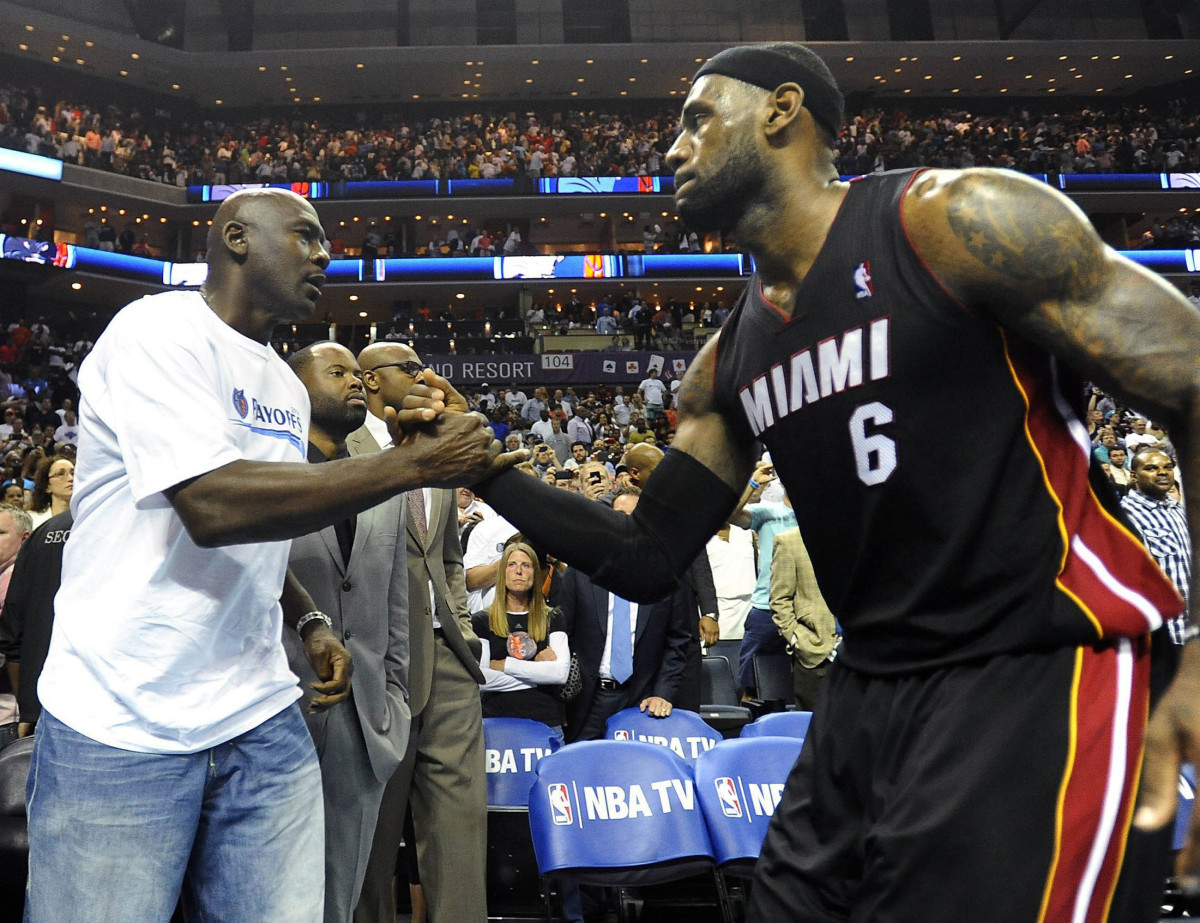One Big Question Must Be Answered Before the NBA Can Correct Its Competitive Balance Issue

Intelligent people agree:
1. The NBA is broken.
2. The NBA has the most exciting offseason in sports.
3. The NBA is broken because of what happens in the most exciting offseason in sports.
Well, intelligent people can get confused sometimes.
Shaquille O'Neal Q&A: LeBron James's Big Move, the Lakers and More
The NBA is in a strange place, undeniably fun but also undeniably kind of screwed up. The Golden State Warriors added Kevin Durant to a 73-win team, and then DeMarcus Cousins to the Durant-led champions, and now the league is separated into two tiers: Warriors and worriers. This is why people say the league is broken, and the only way to beat the Warriors is to break the league further: by adding Kawhi Leonard and LeBron James to the Lakers along with another star, or perhaps if the Celtics grab Leonard themselves to go with their current mix of All-Stars and future All-Stars.
The question is not really whether the NBA is broken. It’s this: What kind of league does the NBA want to be? Is it primarily a national entertainment product? Or is it primarily a vehicle for you to cheer for your local team?
To answer this question, we must, of course, first compare Michael Jordan to LeBron James. Yes, I am serious, but wait! Hang on. Like a loss to the Warriors, this will be quick and not quite as painful as you fear.

MJ was in LeBron’s position once. Twice, actually. In the summers of 1996 and 1997, Jordan was the best player in the world on a championship team, with free agency looming. The difference then: there was never any doubt that Jordan would stay in Chicago. And it wasn’t because Jordan was more loyal or mentally tougher or had more hair on his chest than James. It wasn’t even just because Jordan’s Bulls, unlike James’s Cavs, won championships right before he could hit free agency.
Jordan stayed largely because of money. By NBA rule, the Bulls could offer him more than anybody else. They paid him $30.1 million in 1996–97—more than the entire payroll of most NBA teams—and then gave him a 10% bump the next year.
2018 NBA Free Agency: The Early Winners And Losers
The entire NBA financial system was built to ensure that stars stayed put. The salary cap was instituted so small-market teams could compete. “Larry Bird rights” were created so teams could exceed the salary cap to re-sign their own player. In that environment, the only reason a star would leave is if the team either got cheap or decided to trade him.
The NBA liked this system, and for years, in various collective bargaining agreements, the owners pushed for rules that would back up the same principle: stars, they believed, should stay in one city. Owners feared the environment we see today: A bunch of stars ditching smaller markets for bigger ones.
So why are we here? Well, it started with maximum salaries for players, which were instituted after the 1998–99 lockout. Yes, a team can still offer more to retain players than other teams can offer—but the difference, while significant, is limited. It wasn’t enough to keep Kevin Durant in Oklahoma City or James in Cleveland. And because individual salaries are artificially capped (instead of determined by the free market), teams can wedge three or even four stars onto one payroll.
If the NBA had a relatively hard cap (with the Bird exception) but no maximum salaries, the league would look radically different today. The Cavs could have offered James $75 million a year to stay instead of the $41 million that the NBA allowed. It would have been similar to the deals Jordan signed at the end of his Bulls career, and it probably would have been enough. The Thunder could have offered Durant twice as much as the Warriors did. He would have been worth it. Stars would be spread around the league, because teams could not afford more than two.
Instead, stars are clustered together. That’s how they maximize their free agency, by joining other stars, because they can’t use free agency to make the most possible money. In fact, today’s rules actually encourage players to leave before their contract is up. The rules are complicated and I’m not going to get into super-maxes and all that today. But basically: if stars want to leave as free agents, they might as well try to force a trade to their preferred destination first. Then they can re-sign for the bigger salary. This helps explain (though does not entirely explain) why Carmelo Anthony, Kyrie Irving, Paul George and Kawhi Leonard all requested trades with free agency looming, rather than just wait to hit the market.

So if the NBA really wants to fix its problem, the solution is simple, and the Players Association would surely go for it: get rid of maximum salaries. But this brings us back to that big question: What kind of league does the NBA want to be?
The majority of executives and coaches would surely prefer a more even distribution of talent. From a competitive perspective, the Warriors’ dominance only benefits the Warriors. But as a business, the NBA is in a very different spot than it was in the 1980s or 1990s, and the marketplace has changed radically.
Inside Decision 3.0: LeBron James Follows in the Footsteps of Legends
It is now easier to follow the entire league than it’s ever been—which means that if you follow teams outside your market, the league is better positioned to cash in. You can watch as many Lakers or Warriors games as you’d like, no matter where you live, as long as you’re willing to pay. And I would be willing to bet that more fans will watch LeBron as a Laker than as a Cav, even if they aren’t really Lakers fans.
And if you talk to kids (or their parents), you will notice: they are far more likely to follow individuals now than they were 30 years ago. Of course many of them still have favorite teams. But they also have fantasy teams and a lot of viewing options, and if a star hops from one city to another, the fans can keep following them.
Your local team is probably frustrated now. But on a national scale, the NBA is as hot as it’s ever been. You can say the NBA is broken and you can say the NBA is thriving. Either way, you are right.
